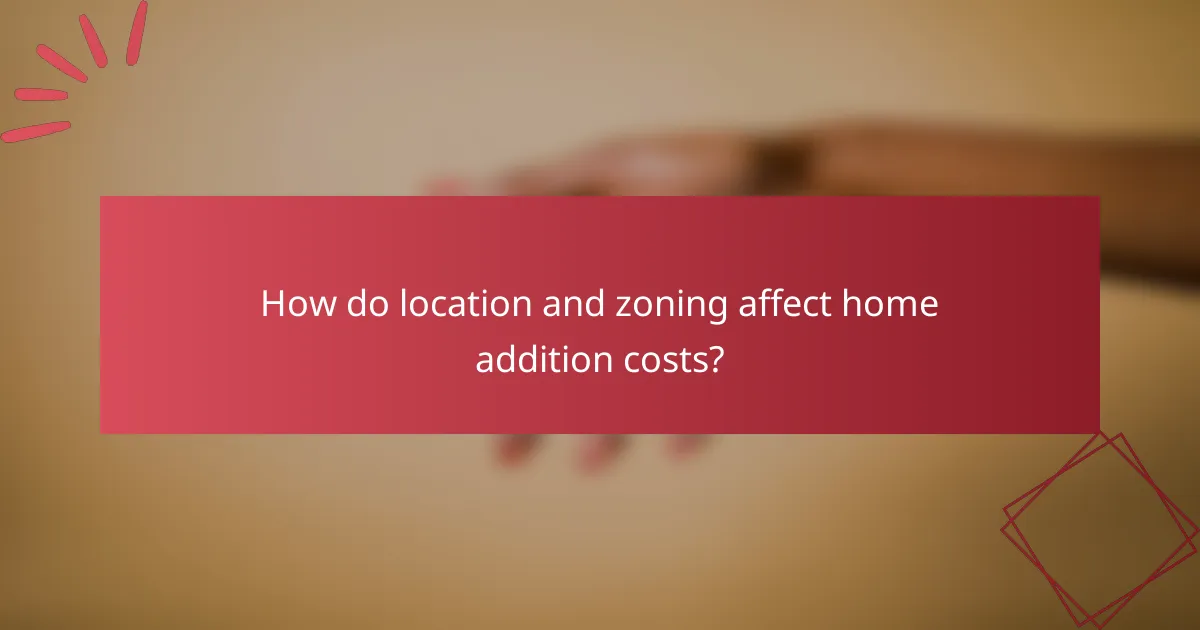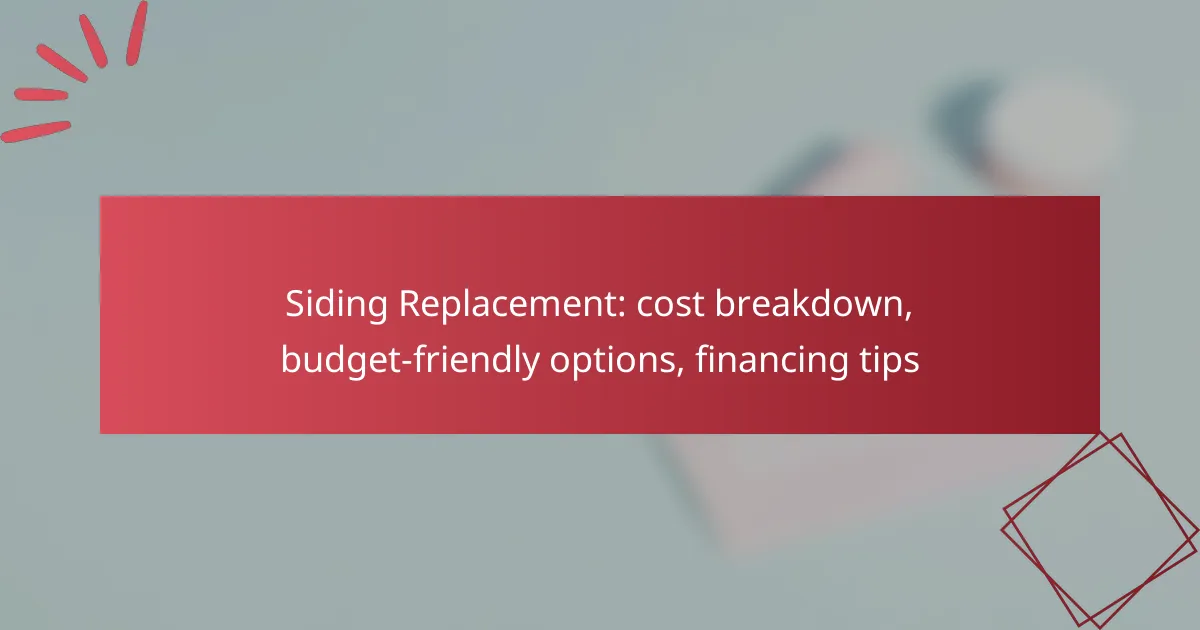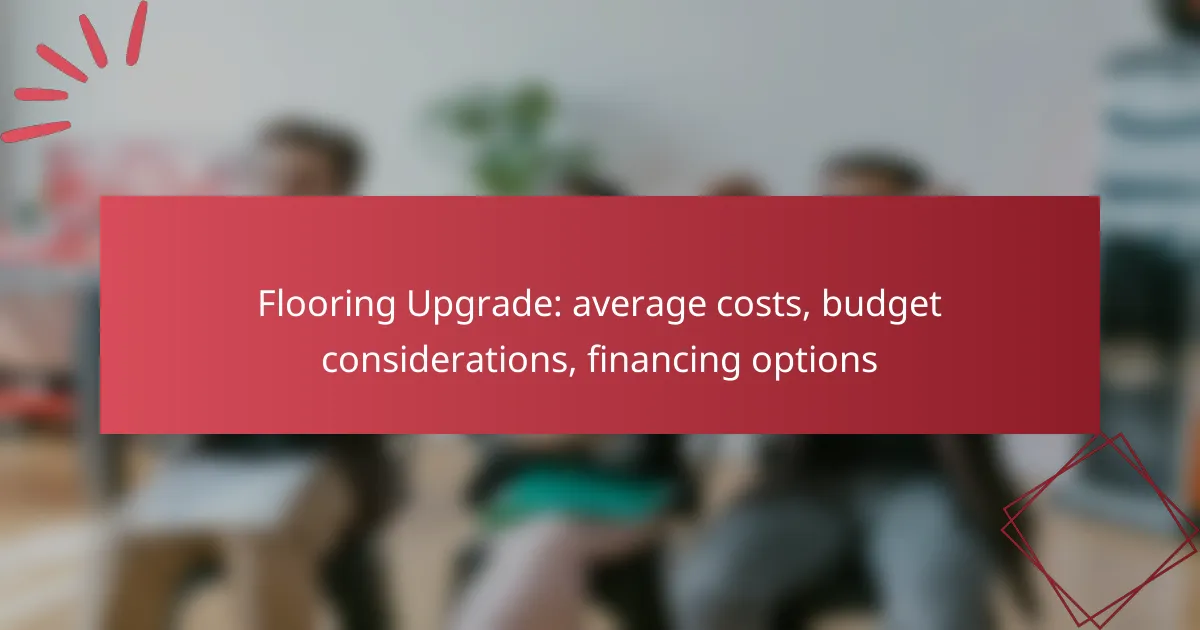Planning a home addition involves navigating various cost factors such as labor, materials, and permits, making it essential for homeowners to budget effectively. Financing options like home equity loans and construction loans can provide the necessary funds, but understanding each method’s implications is crucial. By setting a realistic budget and prioritizing essential features, homeowners can ensure their projects remain financially feasible and successful.

What are the cost factors for home additions in the US?
The cost factors for home additions in the US include labor costs, material expenses, permitting fees, design expenses, and the impact of location. Understanding these elements can help homeowners budget effectively and make informed decisions about their projects.
Labor costs
Labor costs typically account for a significant portion of the total expenses for home additions. Rates can vary widely based on the region, the complexity of the project, and the experience of the contractors involved. On average, homeowners might expect to pay between $50 to $150 per hour for skilled labor.
To manage labor costs, consider obtaining multiple quotes from contractors and negotiating terms. Be cautious of unusually low bids, as they may indicate lower quality work or hidden costs.
Material costs
Material costs for home additions can fluctuate based on the quality and type of materials chosen. Common materials include wood, concrete, and steel, with prices varying significantly; for instance, lumber prices can range from $2 to $10 per board foot depending on market conditions.
When budgeting for materials, factor in not only the initial purchase price but also potential waste and delivery fees. Choosing mid-range materials can often provide a balance between quality and cost.
Permitting fees
Permitting fees are essential to consider, as they can add several hundred to several thousand dollars to your project. These fees vary by municipality and depend on the scope of the addition, with larger projects typically incurring higher costs.
To avoid surprises, check with your local building department early in the planning process to understand the necessary permits and associated fees. This can help ensure compliance with local regulations and avoid costly delays.
Design expenses
Design expenses can range from a few hundred to several thousand dollars, depending on the complexity of the addition and the professionals hired. Hiring an architect or designer can enhance the functionality and aesthetics of the project, but it also adds to the overall budget.
Consider using design software or online tools for preliminary designs to save on costs. However, investing in professional design services may be worthwhile for larger projects to ensure optimal use of space and adherence to building codes.
Location impact
The location of your home significantly impacts the overall cost of additions. Urban areas often have higher labor and material costs compared to rural regions, and local building codes can also influence expenses.
Research the average costs in your area to set realistic budget expectations. Additionally, consider the potential return on investment; certain locations may yield higher property value increases from well-planned additions.

How can I finance a home addition?
Financing a home addition can be achieved through various methods, each with its own advantages and considerations. Key options include home equity loans, personal loans, cash-out refinancing, and construction loans, which cater to different financial situations and project scopes.
Home equity loans
Home equity loans allow homeowners to borrow against the equity built up in their property. Typically, these loans offer fixed interest rates and are repaid over a set term, making monthly payments predictable.
When considering a home equity loan, evaluate your current equity level and ensure you can comfortably manage the additional debt. These loans often range from tens of thousands to hundreds of thousands of dollars, depending on your home’s value and existing mortgage balance.
Personal loans
Personal loans are unsecured loans that can be used for a variety of purposes, including home additions. They generally have higher interest rates compared to secured loans but do not require collateral.
When opting for a personal loan, compare rates from different lenders and consider your credit score, as it significantly impacts the interest rate you may receive. Loan amounts can vary widely, typically ranging from a few thousand to over fifty thousand dollars.
Cash-out refinancing
Cash-out refinancing involves replacing your existing mortgage with a new, larger one, allowing you to take out the difference in cash for your home addition. This option can provide lower interest rates compared to other financing methods.
Before pursuing cash-out refinancing, assess the current mortgage rates and your home’s value. This method can be beneficial if you have significant equity, but it may increase your monthly mortgage payment and overall loan term.
Construction loans
Construction loans are short-term loans specifically designed to cover the costs of building or renovating a home. They typically have higher interest rates and are disbursed in stages as construction progresses.
When considering a construction loan, ensure you have a detailed plan and budget for your addition. These loans usually require a thorough inspection process and can be converted into a traditional mortgage once the project is completed.

What budgeting tips should I consider for a home addition?
When planning a home addition, effective budgeting is crucial to ensure the project stays financially feasible. Key tips include setting a realistic budget, including contingency funds, prioritizing essential features, and researching local contractor rates.
Set a realistic budget
Establishing a realistic budget involves assessing your financial situation and determining how much you can afford to spend on a home addition. Consider factors such as your savings, potential financing options, and the overall value of your home. A typical home addition can range from a few thousand to several tens of thousands of dollars, depending on size and complexity.
Break down the budget into categories such as materials, labor, permits, and design fees. This detailed approach helps in identifying potential overspending areas and allows for better financial planning.
Include contingency funds
Including contingency funds in your budget is essential to cover unexpected costs that may arise during the construction process. A common recommendation is to allocate around 10-20% of your total budget for contingencies. This buffer can help manage surprises like structural issues or changes in material costs.
Having contingency funds ensures that you can complete the project without financial strain, allowing you to address unforeseen challenges without derailing your plans.
Prioritize essential features
When budgeting for a home addition, prioritize essential features that align with your needs and lifestyle. Identify must-haves versus nice-to-haves to avoid overspending on non-essential aspects. For example, if additional living space is your primary goal, focus on that rather than luxury finishes.
Creating a list of priorities helps streamline decision-making and ensures that the most important elements are funded first. This approach can also facilitate future upgrades without exceeding your budget.
Research local contractor rates
Understanding local contractor rates is vital for accurate budgeting. Rates can vary significantly based on location, experience, and the complexity of the project. Researching average costs in your area can provide a clearer picture of what to expect and help you negotiate effectively.
Consider obtaining multiple quotes from contractors to compare prices and services. This not only helps in finding a competitive rate but also allows you to gauge the quality of work and reputation of different contractors in your locality.

What are the common mistakes in budgeting for home additions?
Common mistakes in budgeting for home additions include underestimating costs, ignoring hidden expenses, and not planning for delays. Recognizing these pitfalls can help homeowners create a more accurate and effective budget.
Underestimating costs
Many homeowners tend to underestimate the total costs associated with home additions. This often results from a lack of comprehensive research or relying solely on initial quotes. It’s essential to account for all aspects, including materials, labor, permits, and design fees.
A practical approach is to add a contingency fund of around 10-20% of the total estimated cost to cover unexpected expenses. This buffer can help mitigate financial strain if costs exceed initial projections.
Ignoring hidden expenses
Hidden expenses can significantly impact the overall budget for a home addition. These may include costs for site preparation, utility upgrades, or even landscaping changes that arise from the construction process. Failing to account for these can lead to budget overruns.
To avoid this mistake, conduct thorough research and consult with professionals who can identify potential hidden costs. Creating a detailed checklist of all possible expenses can also be beneficial.
Not planning for delays
Delays are a common occurrence in home addition projects and can lead to increased costs and frustration. Factors such as weather conditions, supply chain issues, or labor shortages can all contribute to project delays. Not factoring these into the budget can create financial strain.
To prepare for potential delays, build extra time into your project schedule and budget for additional costs that may arise during this period. Setting realistic timelines and maintaining open communication with contractors can help manage expectations and minimize disruptions.

How do location and zoning affect home addition costs?
Location and zoning significantly influence the costs of home additions by determining what is permissible and the associated expenses. Local regulations can dictate the size, type, and even the materials used for additions, impacting both budget and timeline.
Local zoning laws
Local zoning laws establish the rules for land use and building practices in specific areas. These regulations can restrict the height, footprint, and design of your home addition, which may require adjustments to your plans and budget. Understanding these laws is crucial before starting any project.
For instance, if you live in a residential zone, there may be limits on how much of your lot can be built upon, often referred to as the lot coverage ratio. In some urban areas, this might be around 30-50%, while in rural settings, it could be higher. Always check with your local zoning office to get accurate information.
Additionally, zoning laws may require you to obtain special permits or variances, which can add time and costs to your project. Engaging with a local architect or contractor familiar with these regulations can help navigate the complexities and avoid costly mistakes.



